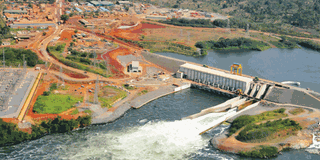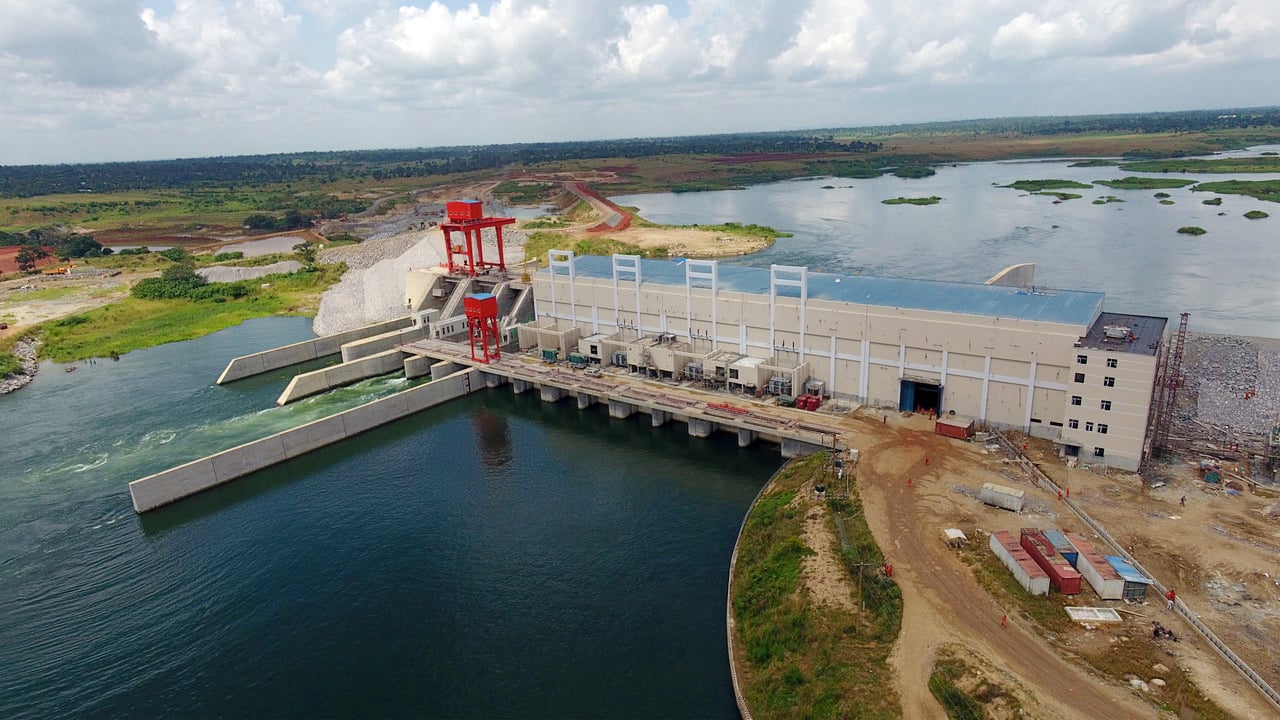Prime
‘Isimba dam flood could be repeated’

An aerial view of the Isimba hydropower dam in Kayunga District. Last year’s flooding reportedly submerged vital machines and components, including four turbines and generators.
PHOTO/FILE
What you need to know:
- Last August, power generation at Isimba was temporarily halted and the power house shut down following what was described as “massive flooding.”
- Work on the Isimba Dam, which on average supplies approximately 105 MW per hour to the national grid, commenced in April 2015.
- The dam was commissioned in March 2019.
The Uganda Electricity Generation Company Limited (UEGCL) is on the spot for spending Shs1.3 billion on fixing the defects on the 183.2MW Isimba dam while a Defects Liability Period (DLP) is yet to run its course.
The DLP is a fixed time frame starting from the date of practical completion of a project during which a contractor has the contractual obligation to return to the project site and rectify any defects or complete unfinished work.
Work on the Isimba Dam, which on average supplies approximately 105 MW per hour to the national grid, commenced in April 2015. The dam was commissioned in March 2019.
The project was initially under two DLPs; the first which expired in March 2021 and the second last March. The DLPs were extended after the project was commissioned. This followed the discovery of a plethora of defects.
The dam was then placed under a third DLP, which is set to expire in March this year.
Last August, power generation at Isimba was temporarily halted and the power house shut down following what was described as “massive flooding.”
The flooding reportedly submerged vital machines and components, including four turbines and generators.
Costly mistake
The DLP mandated the contractor, China International Water and Electric Corporation (CWE), to meet the costs for rectifying the defects that saw the power plant taken off the national grid for more than a week. It has, however, since emerged that the contractor did not pick the bill for the repairs.
The Auditor General’s latest report makes it abundantly clear that UEGCL picked the tab, paying more than twice what had earlier been envisaged.
On August 28 last year, Mr Harrison Mutikanga, the chief executive officer (CEO) of UEGCL, told Prime Minister Robinah Nabbanja that restoration of all the units would cost the taxpayer Shs600 million.
This was during an onsite tour of the stricken power facility. By the time the premier toured the dam, UEGCL had spent Shs560 million on restoration of three units of the dam.
“This money (Shs560 million) is within our operational budget. The restoration cost may increase slightly to about Shs600 million,” Mr Mutikanga told Ms Nabbanja.
The Auditor General’s report, however, indicates that UEGCL shelled out north of Shs1.3 billion—more than twice what its chief executive had envisaged would be spent on defects CWE was supposed to tend to.
Mr John Muwanga, the Auditor General, further points out that fixing the defects might cost the taxpayer even much more money as all the defects had not been fixed by the time he compiled his latest audit report.
“The company (UEGCL) spent Shs1.3 billion to fix the damage. However, other repairs and replacements were yet to be undertaken and therefore the cost is anticipated to be much higher,” the Auditor General’s report for the Financial Year ended June 30, 2022, reads in part.
The report invites uncomfortable questions for UEGCL as to why it moved to pay to fix the damage when it was not responsible for the mishaps that led to the shutdown.
Mr Enock Kusasira, the parastatal company’s spokesperson, was quick to defend its decision to pick up the tab. He told Saturday Monitor that the situation required urgent action.
“UEGCL had to undertake the restoration of the power plant as a matter of generation licence obligation. We did not wait for the contractual process to end since there was an urgent need to restore power generation at the time,” Mr Kusasira said, adding that it “was an emergency.”
Contractor blamed
He also downplayed fears raised by the Auditor General that the total cost of repairs was likely to shoot further than the Shs1.3 billion that UEGCL has so far spent. The final bill, Mr Kusasira revealed, will still be passed on to the contractor.
“We don’t expect the cost of restoration to go any further than what has been assessed so far,” he said, adding, “Some few instruments are still under procurement since their original suppliers were slow to respond.”
Isimba revenues lift up UEGCL’s performance
During Prime Minister Nabbanja’s visit to Isimba, Mr Mutikanga absolved CWE, the contractor, of any wrongdoing. He instead blamed the “flooding” on one of UEGCL’s engineers.
“One of the engineers, who was undertaking routine maintenance, opened the wrong gates, leading to a gush of water, submerging the machines … This incident was an accident on the part of UEGCL engineers; not contractor” Mr Mutikanga revealed back then.
The Auditor General’s report, however, thinks quite the opposite. It lays the blame for the events that led to the shutdown on the contractor.
“The flooding was attributed to the contractor’s failure to fix all the snags, including a malfunctioning gantry gate; safe access to the plant facilities; and lack of operational and maintenance manuals to guide the staff on the safety precautions that needed to be undertaken,” Mr Muwanga notes in the audit report.
Mr Kusasira declined to comment on the Auditor General’s conclusion, but hastened to add that “any claims and counter claims will be handled in accordance with the contract.”
Warning of repeat
In what should be a cause of worry, the Auditor General says that the Isimba dam project is not yet out of the woods. Mr Muwanga warns that a repeat of the events that led to taking the plant off the national grid is highly likely. Such an outcome, he warns, will tremendously increase the cost of the project.
“There is a risk that if these snags are not addressed in a timely manner, the costs of the owners’ engineer and feasibility of the project may affect the overall plant effectiveness. Furthermore, the risk of the flooding reoccurring cannot be ruled out if the causes are not clearly established and rectified in a timely manner,” the report warns.
Mr Kusasira, however, played down the risk of a repeat of the flooding.
“The incident was fully investigated in accordance with the generation licence terms and all recommendations are being executed. Therefore, there is no risk of a repeat incident as it is being suggested,” Mr Kusasira said.




